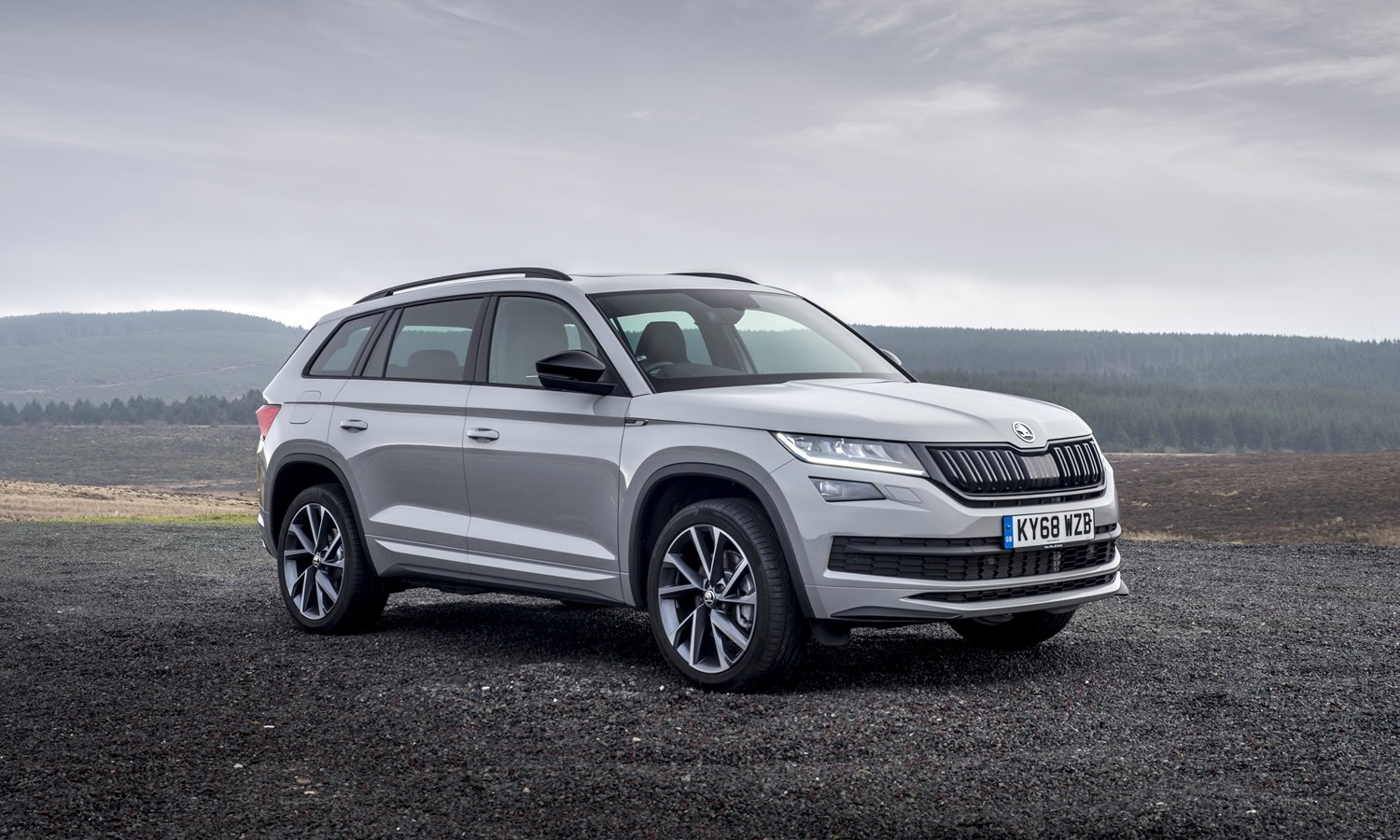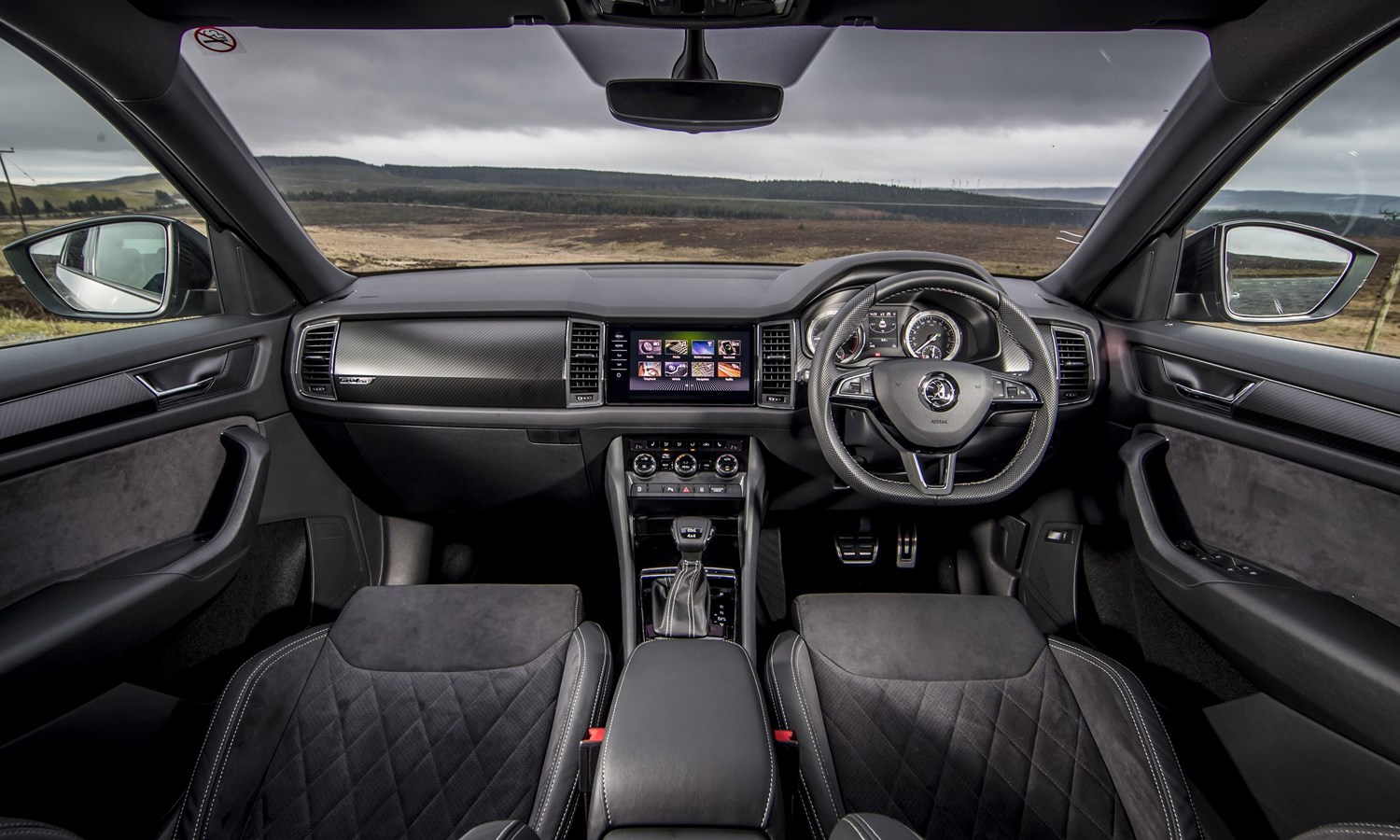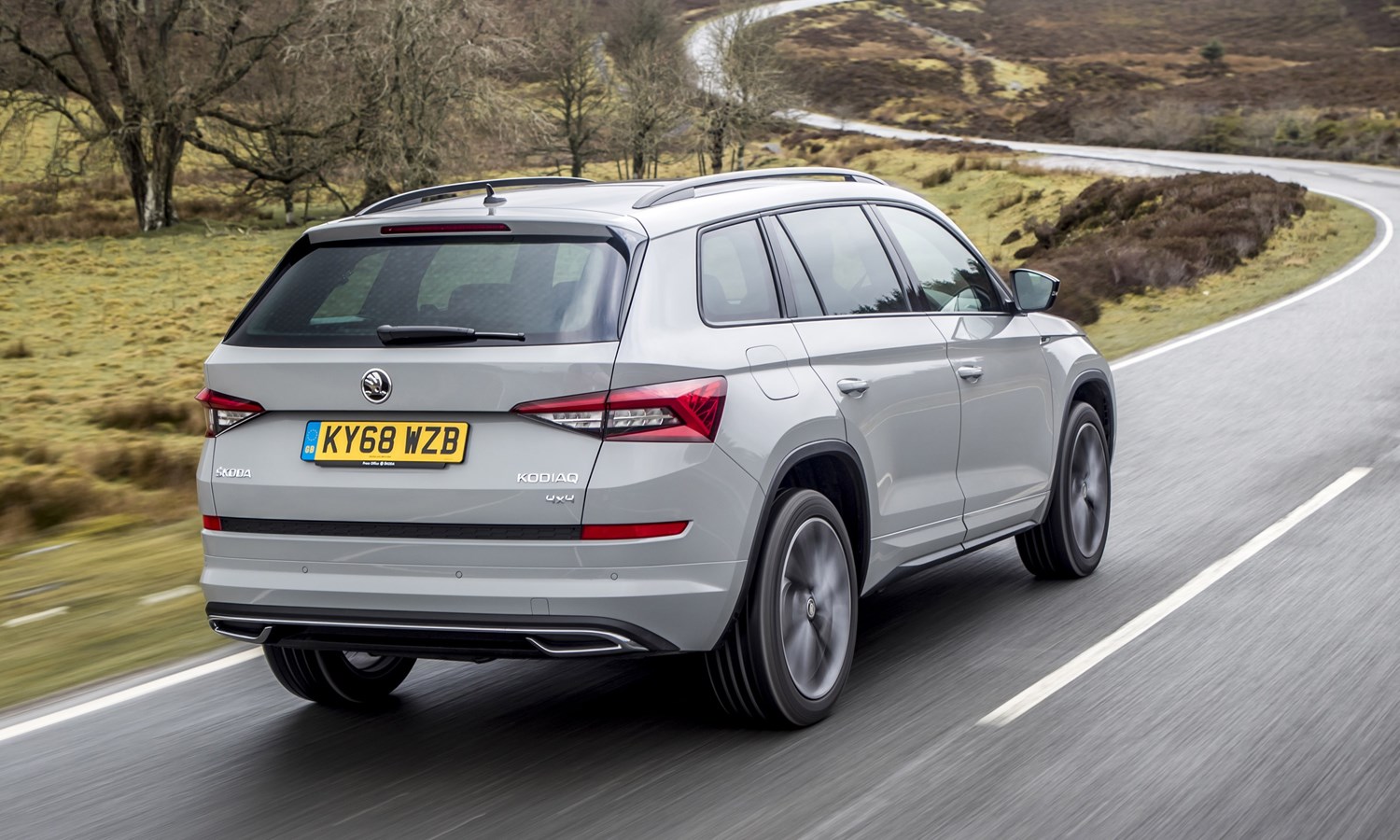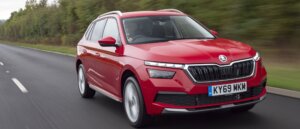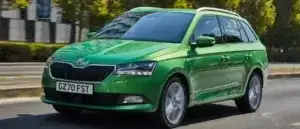Latest model
The first major changes for the Kodiaq came in 2021 with a mid-life facelifted version. Given what a solid base Skoda had already, the changes aren’t huge, but design updates to look out for include a wider hexagonal grille, slimmer LED headlights (Matrix LEDs are fitted on all but entry-level SE Cars) and larger rear spoiler at the rear.
Greater driver assistance technology was also available as an option, while Skoda also noticeably bolstered the list of standard kit included, albeit joined by an increase in pricing.
The other key change was that the vRS switched from diesel to petrol power, with Skoda now using a 242bhp 2.0-litre petrol engine in its sportiest model – interestingly it’s the same unit that you find in the Volkswagen Golf GTI.
Value for money
Though Skoda’s models have moved more upmarket in recent years, by and large its cars are still good value for money, and the Kodiaq is no exception. With prices starting from £28,165 you do get an awful lot of car for your money – both in terms of physical metal and also in equipment, with an eight-inch touchscreen, LED headlights, keyless entry and dual-zone climate control all included.
The only downside is that the Kodiaq doesn’t get five seats as standard, and you’ll need to pay an extra £1,500 for these, though they are included on all but the entry-level S and SE models.
Used Kodiaqs are a solid buy too, and though prices are remaining quite firm, decent savings are still available on used examples. At the time of writing a four-year-old car with relatively low mileage would still cost you £20,000, with savings minimal on nearly-new cars.
Looks and image
here’s no disguising the sheer size of the Kodiaq, but it’s undoubtedly one of the smartest looking large SUVs on the market. Neat LED lights at the front and rear, as well as just the right amount of plastic cladding, give it smart styling without it having to try too hard. If you want something more visually exciting, you can always choose the bolder SportLine or vRS models, which certainly give the Kodiaq plenty of street cred.
Though the design of the Kodiaq’s interior isn’t especially exciting, what you can’t knock it for is quality, which is among the best in this segment, and actually makes it feel more premium than mainstream. All versions now feature a large touchscreen with wireless smartphone mirroring, with top-end versions using a 9.2-inch screen that’s brilliantly integrated into the dashboard. The ergonomics are generally excellent, and contribute to what a great car it would be to live with.
You probably wouldn’t expect a large SUV to be anything special to drive, but that’s where the Kodiaq will surprise you. Granted, it’s no hot hatch, but it’s a lot more enjoyable than you would expect, with direct steering and limited body roll making it the best car in this segment where driving pleasure is concerned. This isn’t at the expense of ride comfort, either, as it also impresses in this area.
